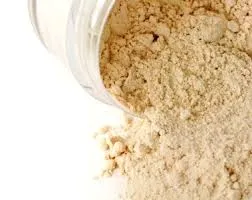The Synergistic Relationship Between PQQ and Glutathione in Cellular Health
In the realm of nutritional science, specific compounds have emerged as pivotal players in cellular health and longevity. Two such compounds are pyrroloquinoline quinone (PQQ) and glutathione. While they operate via distinct mechanisms, their interactions are essential for promoting overall well-being. This article explores the roles of PQQ and glutathione, their individual health benefits, and how they synergistically contribute to cellular function and protection.
Understanding PQQ
PQQ is a redox cofactor found in various foods, including fermented soybeans, green tea, and certain fruits. While initially recognized for its roles in mitochondrial function and energy metabolism, recent research highlights PQQ's powerful antioxidant properties. It has been shown to stimulate the growth of new mitochondria, a process known as mitochondrial biogenesis, thereby enhancing energy production within cells. This is particularly important because as we age, mitochondrial function tends to decline, leading to decreased energy levels and increased susceptibility to age-related diseases.
Moreover, PQQ has neuroprotective effects. Studies suggest that it can protect against oxidative stress and inflammation, two key factors contributing to neurodegenerative conditions such as Alzheimer's and Parkinson's diseases. Its ability to support cognitive function, improve mood, and enhance overall mental clarity makes PQQ a significant focus in the field of brain health.
The Role of Glutathione
On the other hand, glutathione is often referred to as the body's master antioxidant. Composed of three amino acids – cysteine, glutamine, and glycine – glutathione plays a crucial role in detoxifying harmful substances, protecting cells from oxidative stress, and maintaining the immune system. It acts by neutralizing free radicals and supporting the regeneration of other antioxidants, such as vitamins C and E.
Glutathione levels are also closely tied to various health outcomes. Low levels of glutathione have been associated with a range of conditions, including chronic diseases, autoimmune disorders, and even cancer. As we age, the production of glutathione declines, making the replenishment of this vital compound crucial for maintaining cellular health and function.
pqq and glutathione

The Synergy Between PQQ and Glutathione
The interplay between PQQ and glutathione is fascinating and highlights the importance of both in preserving cellular integrity. Research suggests that PQQ can enhance the synthesis of glutathione in the body. By stimulating the production of this master antioxidant, PQQ helps to bolster the body's defenses against oxidative stress. Thus, individuals who intake PQQ may experience improved levels of glutathione, which in turn aids in detoxification and protection against inflammation.
This synergistic relationship can be particularly beneficial in combating the effects of aging and environmental stressors. For instance, as mitochondrial function declines in older adults, the body’s ability to produce energy diminishes, leading to increased oxidative stress. By supplementing with PQQ, individuals may not only enhance their energy levels but also support glutathione synthesis, creating a formidable barrier against cellular damage.
Practical Applications and Considerations
Incorporating PQQ and glutathione into one’s diet can be achieved through supplements and nutrient-rich foods. PQQ can be found in certain dietary supplements, while glutathione can be boosted through foods like spinach, avocados, and asparagus or through supplements formulated with N-acetylcysteine (NAC), an amino acid that supports its production.
While both compounds offer remarkable benefits, it's essential to approach supplementation with caution and ideally under a healthcare professional's guidance. Individual health conditions, dietary habits, and overall lifestyle can influence the effectiveness and necessity of these supplements.
Conclusion
PQQ and glutathione are two potent compounds that play critical roles in maintaining cellular health and longevity. Their unique characteristics and synergistic interactions provide a comprehensive strategy for combatting oxidative stress, enhancing mitochondrial function, and supporting overall well-being. As research continues to unfold, understanding the intricacies of these compounds will be vital in the pursuit of health and longevity in an increasingly stressful and aging world.

